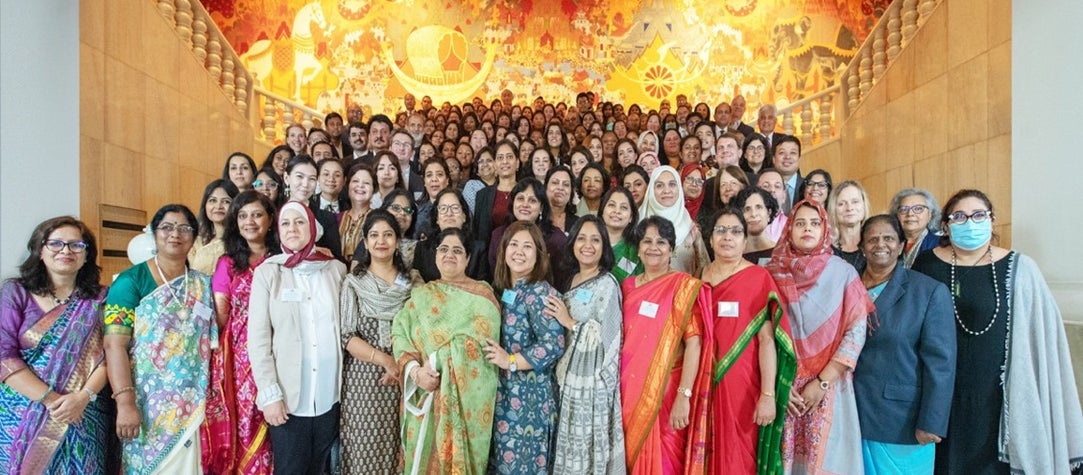 WePOWER is a collective response to increase women in STEM and the energy workforce
WePOWER is a collective response to increase women in STEM and the energy workforce
The Energy Transition needs more women in STEM
Having more women in technical and leadership positions in energy is crucial to meet the projected 14 million new jobs that will be needed for clean energy growth by 2030. As Mandakini Kaul, World Bank’s Regional Coordinator for South Asia, emphasized at a recent WePOWER Conference: “Women must be powerful voices in this energy transition!”
According to the IEA, clean energy investment was expected to exceed US$1.4 trillion in 2022 – almost three-quarters of the growth in overall energy investment. In India alone, to achieve net zero goals by 2070, the World Bank estimates the country must invest US$190 billion per year in the energy economy until 2030. The transformation of the energy sector requires a transformation of the energy workforce.
WePOWER was founded to address the underrepresentation of women in the energy sector in South Asia, and one of its key objectives is to promote women and girls in science, tech, engineering, and math (STEM) education. In South Asia, about three-quarters of STEM students are male. Girls show increasing disengagement with STEM in secondary and postsecondary education – and ultimately, few of them end up with STEM jobs and careers. A World Bank assessment found that while between 35-53 percent of STEM graduates in Middle East and North Africa (MENA) countries are women, most are not employed in STEM careers and represent only 1-25 percent of the workforce.
Energy transition can gain from women’s human capital
The energy transition is an opportunity for women to improve their access to technical and leadership training, skills development, and high-quality jobs. Cross-sector collaboration with education and information and communication technologies (ICT) is required to prepare a qualified and inclusive workforce. Energy sector employers can do a lot, but governments, communities and households need to do their part as well. The governments’ programs and policies can support universities in increasing women’s enrollment in STEM and encourage companies to hire and retain more women. Secondly, as employers, energy sector companies can be pro-active, reaching out to schools and speaking to students about the opportunities in the energy sector. Sometimes, girls and their parents just don’t have the information that energy jobs are well-paid opportunities for young women. At the community level, parents and community members need to encourage girls and give them confidence that energy is the sector of the future – that they have the skills to develop, whether it is math, science, or engineering, to be productive in the energy sector as employees, and as leaders.
WePOWER is a collective response to increase women in STEM and the energy workforce
The WePOWER Network is working with over 28,000 women and girls in South Asia to change gender norms and increase the participation of women and girls in energy. Partners are engaging with girls in primary and secondary schools through STEM outreach, interactions with role models, site visits to hydropower plants, and career sessions focusing on STEM, among other initiatives. For women professionals, in the past 3.5 years, over 4,000 activities focused on STEM have been provided by energy sector organizations and utilities across South Asia. WePOWER partner organizations rolled out personal development courses, technical skills training, and improved onboarding post-maternity leave through mentoring and other programs.
WePOWER partners recruit and retain women who are active and visible role models in all types of energy jobs. A critical mass of women professionals changes the norm. In Sri Lanka, approximately 13 percent of the power utilitiesystaff are women (compared to 16 percent globally), and an encouraging 17% of positions at the management and executive levels are held by women.
At the recent WePOWER conference, new activities were proposed to build upon the robust success of the network. Ideas ranged from safer transportation for women, to inclusive internship programs and more generous maternity benefits, among others. WePOWER partner organizations – energy companies and utilities representing several South Asian countries – jointly created a detailed guide to successfully hosting internship programs for both female and male students in South Asia. Practical tools like this offer energy sector organizations the support and insight needed to move the needle on gender equality in their organizations.
WePOWER is a network of partners, for partners. WePOWER has demonstrated that a regional network for women in energy works. The challenge is to replicate this success at the global level. The first WePOWER sister Network was launched in the MENA region last year. Similar initiatives are planned for Africa, Europe and Central Asia, and other regions. These efforts on the global scale will serve to overcome normative barriers for girls and women in STEM jobs.
Subscribe here to stay up to date with the latest Energy blogs.



Join the Conversation